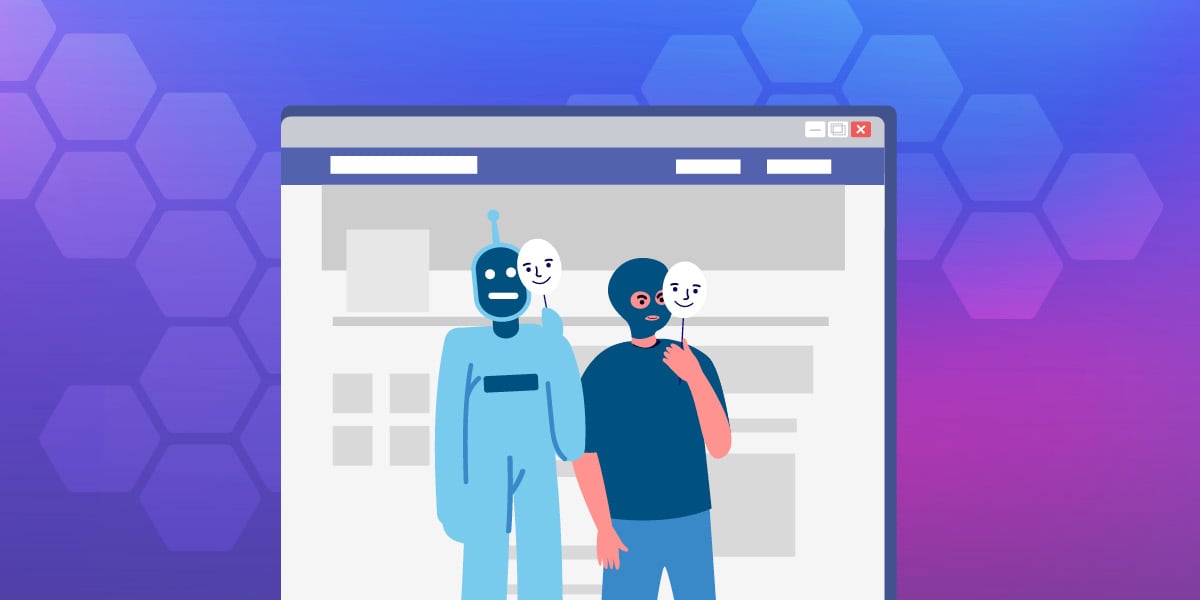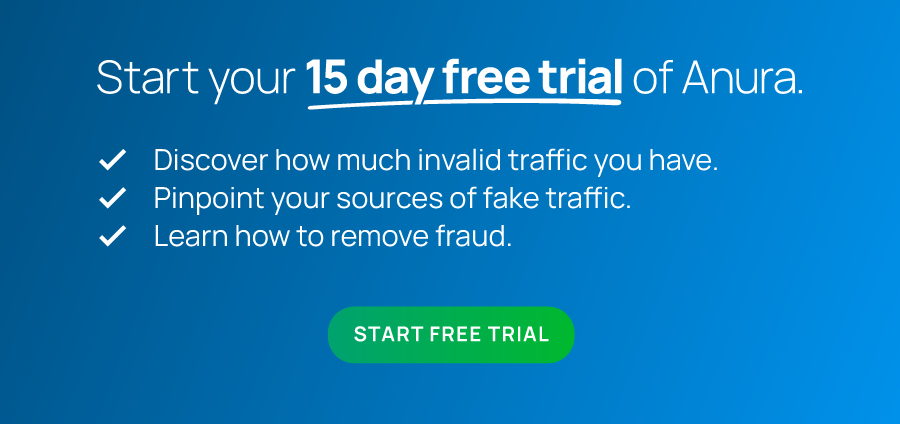Traffic from Fake Facebook Accounts Can Harm Your Brand

TL;DR: Fake Facebook accounts might inflate your numbers, but they ultimately hurt your brand by draining ad budgets, corrupting analytics, and damaging trust. While platforms like Meta work to remove them, businesses must proactively defend against fake traffic and fraudulent engagement.
How Fake Traffic Hurts Brands:
- Skews Analytics: Fake likes and clicks make engagement seem high, but conversions stay low.
- Wastes Budget: You pay for clicks—even if they’re from bots or fraud farms.
- Damages Trust: Fake business pages or impersonator ads can spread malware or scam consumers.
Faux fur never really goes out of style, but it's certainly having a moment this year. It’s fashionable, cruelty-free, and unmistakably fake — and that’s the point.
But there’s another kind of “faux” that’s far less fabulous: fake Facebook accounts. While faux fur adds value to your look, fake followers can damage your brand’s reputation, mislead your marketing analytics, and ultimately waste your budget. And just like fashion trends, fake Facebook accounts seem to keep coming back.
How Many Fake Facebook Accounts Are Out There?
How popular are fake Facebook accounts?
It’s hard to say for sure since these so-called ghost accounts are created nearly as fast as they’re removed. However, in the third quarter of 2024, Facebook took action on 1.1 billion fake accounts.
So, while Meta doesn’t release the exact reports on Facebook’s fake accounts, the company estimates that 4-5% of those accounts are fake. Considering there are around 3 billion active accounts, there may be as many as 150 million fake accounts at any given time.
Why Are There So Many Fake Accounts on Facebook?
If you’ve ever had your personal Facebook account hacked or suspended, you’ve probably realized how hard it is to recover your account. Unfortunately, that process can take much longer and be much more difficult than setting up a fake account.
Fake Facebook accounts exist for one simple reason: they’re profitable. Scammers, spammers, and shady marketers use them to:
- Inflate follower counts to sell fake influence or credibility
- Spread misinformation or spam without being easily traced
- Run fraudulent ads or phishing schemes targeting real users
- Manipulate engagement metrics for pages, groups, or campaigns
Whether they’re using bots or actual humans to set up fake accounts, your brand could wind up paying the price.
How Can Fake Accounts Hurt My Brand Reputation?
Facebook fake followers and fake accounts may look like growth on the surface, but behind the scenes, they generate nothing but empty engagement and misleading data. While faux fur might be fashionable because it’s knowingly fake, fake Facebook accounts are a different story: they can quietly erode your credibility, distort your metrics, and damage the trust you’ve built with your audience.
At first glance, having more followers might seem like a win. But when those followers are fake, they bring zero value and create long-term risks for your brand.
Here are three ways fake traffic and fake accounts can ruin your brand’s reputation.
1. Fake Traffic Affects Your Audience Engagement and Skews Your Analytics
They like you! They really like you! But are “they” real? Are they really engaging with your content to learn more about your products and services, or are they just running up numbers and depleting your ad budget?
Facebook’s goal “is to make sure you see posts from the people, interests, and ideas that you find valuable, whether that content comes from people you’re already connected to or from those you may not yet know.” Your posts and ads should organically appear in your target audience’s feed. Over time, when this happens, you’ll gain new likes from those likely to engage with your content, share with their own networks, and convert.
You can buy likes, but you can’t buy authentic, long-term engagement.
Gradually, these bought likes will taper off. Many bought accounts will stop engaging because they didn’t come to your page organically and have no genuine interest in your products and services; bots and fake accounts will move on, which is just as well since they can’t possibly convert. As engagement drops, so does the likelihood that your content will reach real users in your target audience.
Fake traffic can give you a false sense of security. You think your audience is engaged and that your campaign is driving results, but then you look at your conversion rate and realize it doesn’t align with the activity.
As bots get better at acting like real humans and more fake accounts are set up by humans from a click or fraud farm, it becomes harder for brands to collect accurate data on their community. It may become difficult to determine who your actual audience is, where they’re located, and other data you rely on to plan your digital ad campaigns.
2. Fake Traffic Wastes Money and Marketing Efforts.
When fake accounts like, share, or comment on your posts, they do more than clutter your feed and hurt your brand’s engagement. Those fake likes hurt your brand’s engagement, skew your analytics, and undermine your current and future digital campaigns.
Since fake traffic can’t convert, all your efforts trying to get them to do so are just a waste. If you bought those likes, chances are you likely bought no long-term followers, so that expense didn’t generate the desired results.
Then there’s the cost of placing the ads. You pay for the clicks, whether they’re real or fake, which negatively affects your marketing return on investment (ROI). What’s more, those fake clicks can quickly drain your ad budgets before they can ever reach your target audience.
Often, you don’t realize the clicks aren’t converting until the campaign has run for a few days and you check your analytics. When you discover the conversions aren’t as expected based on activity, you do a little more data diving and notice things like little time spent on your website or landing page, a bulk of traffic coming from the same IP address, or a lot of traffic coming from outside your targeted geographic region.
That’s a good indicator that most of your campaign activity has been generated by fake traffic. You can pull the plug on the campaign, but you’re already out the cost of the placement and the clicks. You can request a refund, but it can be a lengthy process with no guarantees and then there’s the time and effort your marketing team spent on developing the campaign; there’s no way to get that back.
3. Fake Accounts Can Erode Brand Trust
Worrying about fake personal accounts interacting with your brand’s content and ads is bad enough. Still, it can be even more worrisome when fraudsters create a phony business account that appears to be your brand. Remember, fraudsters’ end game is to make money; they don’t care if or how their activity can hurt your brand reputation, but the effect can be damaging and long-lasting.
Fraudsters can set up a business account with a name similar to yours or use a business account to place fake ads that appear to be from your company. Visitors clicking on the fake ads can be directed to counterfeit websites that look legitimate.
Consumers who fall for this ruse may accidentally download malware to their computer or place an order they later never received. This activity can make a brand’s legitimate followers lose trust in the real ads, making them reluctant to click on them and make a purchase.
Fraudsters may also use fake business accounts to spread misinformation. If consumers aren’t hypervigilant, they may assume your brand is behind the activity, resulting in a negative perception of your brand.
Once there’s a stain on your brand’s reputation, it is often difficult to rebuild consumers’ trust and perceptions, even after the issue is resolved and proven to have originated from a fraudster.
What’s Being Done to Stop Fake Facebook Traffic?
As we said at the start of this article, Facebook has shut down billions of fake accounts; they know they have a problem.
Meta invests heavily in artificial intelligence and machine learning systems designed to detect suspicious behavior, such as unusual login activity, bot-like posting patterns, or accounts that interact only with spam content.
However, it’s not all straightforward progress. While Meta works hard to eliminate bad actors, it has also rolled out features that complicate the picture. For example, users can now create multiple personal profiles under a single account.
This change was meant to help people separate different aspects of their lives, like one profile for family and another for professional networking. But from a marketing standpoint, it raises concerns: the same person could see your ads or posts in more than one feed, which can skew reach, engagement, and campaign performance data.
The takeaway? While Meta is fighting fake traffic at scale, businesses still need to stay alert. Relying solely on the platform’s defenses isn’t enough…especially when your brand reputation is on the line.
Protect Your Brand from Fake Facebook Accounts
When it comes to protecting your brand from fake accounts and traffic on Facebook, your hands aren’t tied. There are some things you can do to protect yourself and your brand, such as:
- Don’t buy fake traffic. It will take longer to build your audience organically, but it will be worth the effort in the long term. Real users are where the value is.
- Monitor, monitor, monitor. Closely and constantly monitor your followers, likes, clicks, and campaign analytics. Watch for high bounce rates, short session duration, and suspicious traffic sources.
- Be careful when using Facebook Audience Network. Much of the traffic in the Facebook Audience Network comes from mobile apps, which tend to have more bots and fraudulent traffic.
Fighting fake accounts alone is an ongoing, time-consuming, and ineffective battle. An ad fraud detection partner on your side does the fighting for you, allowing your team to focus on developing and executing campaigns that resonate with real users and drive actual results.
Anura’s Search and Social ProtectTM solution can detect fake accounts and stop them from even seeing your social ads and content. If bots and fraudsters can’t see your posts, they can’t interact with them, reducing fake clicks, increasing conversions, and saving you time applying for refunds you may never get.
Experience the power of Anura and discover just how much fraud you have with a free trial!


